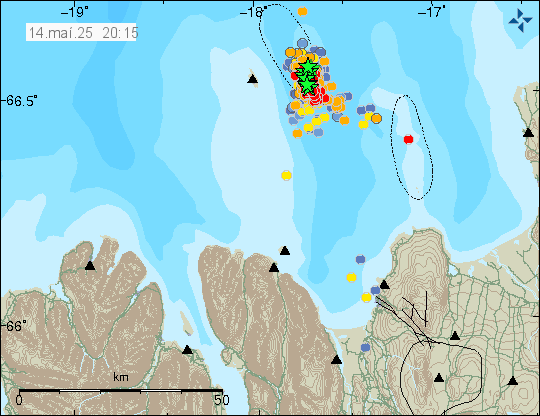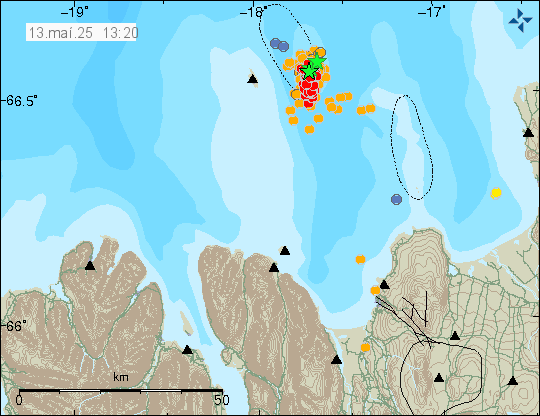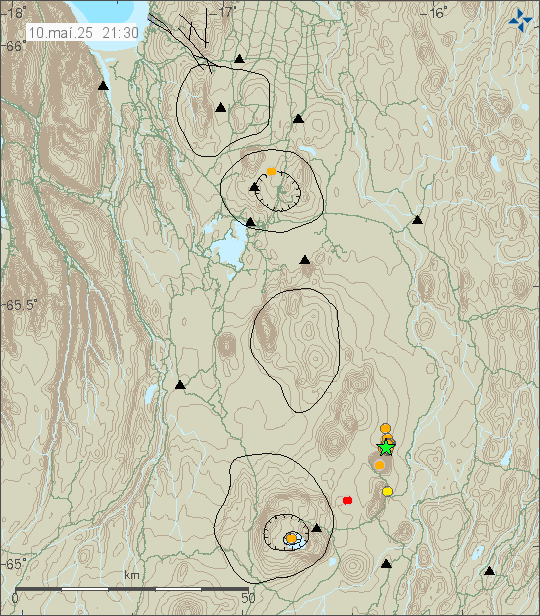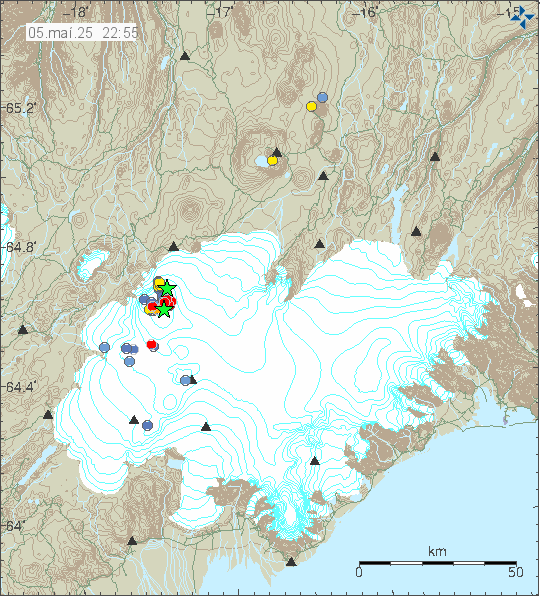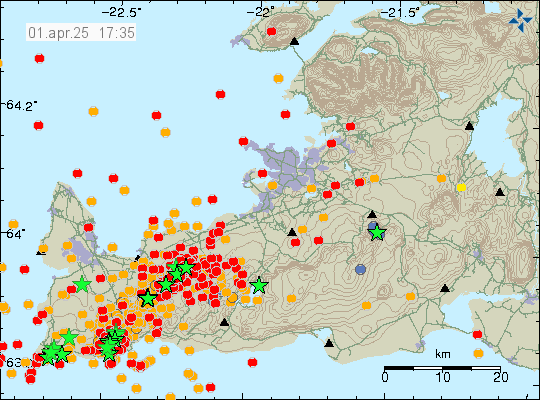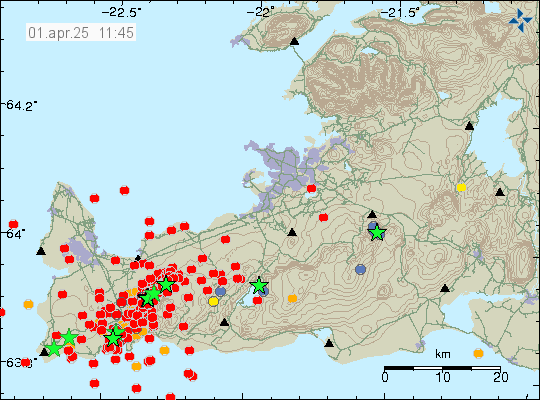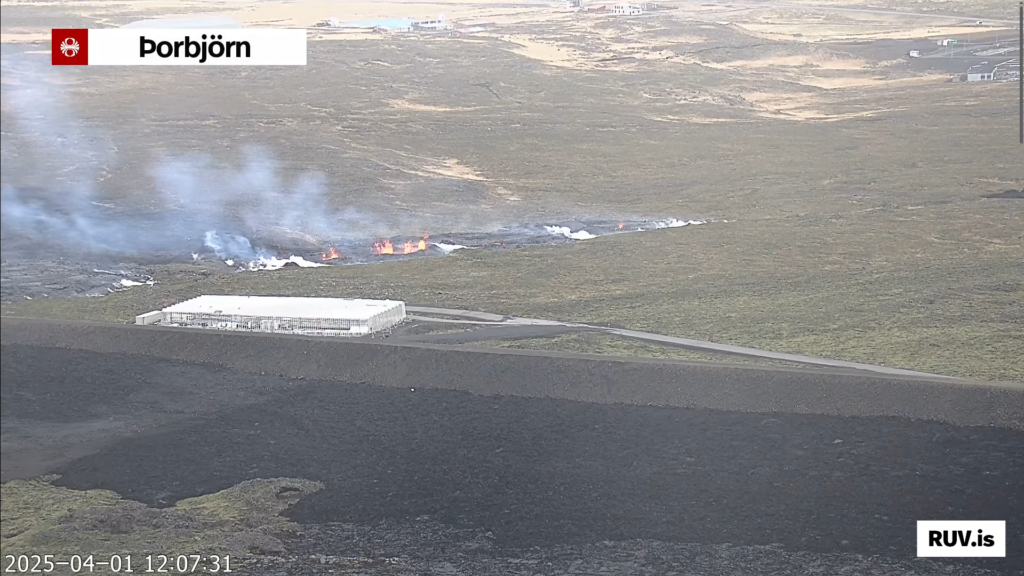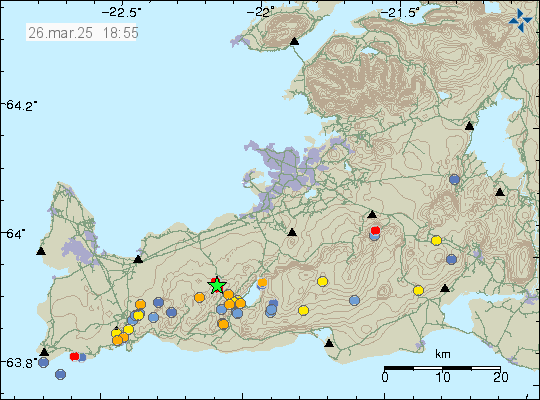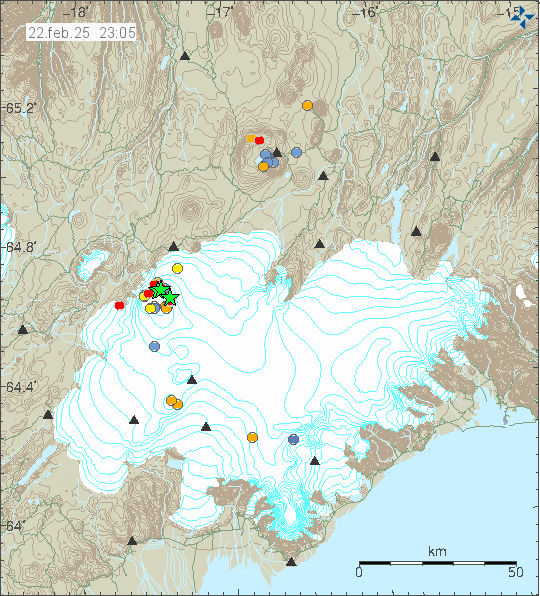Today (24. May 2025) there has been a strong earthquake swarm. Largest earthquake in this swarm so far had a magnitude of Mw5,1. It was felt over a wide area in south Iceland. Over 40 earthquakes with magnitude Mw3,0 or larger have taken place in last few hours.
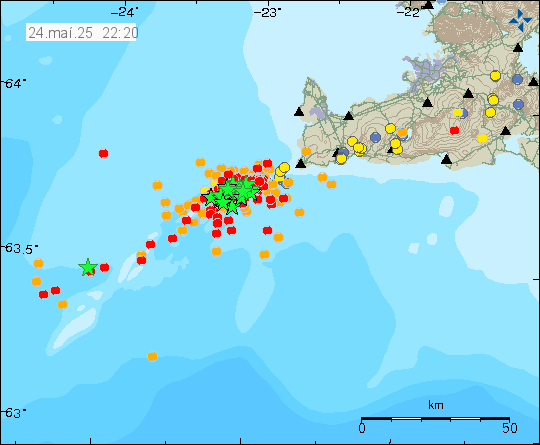
At the writing of this article. The earthquake swarm is ongoing but seems to be slowing down at the writing of this article. Earthquake activity in this area can increase again suddenly. Icelandic Met Office says this earthquake swarm is because of tectonic movement. In my personal view there is a chance magma might be the reason for this earthquake swarm. The exact reason for this earthquake swarm is unclear at the writing of this article. That might change if this earthquake activity increases again.

